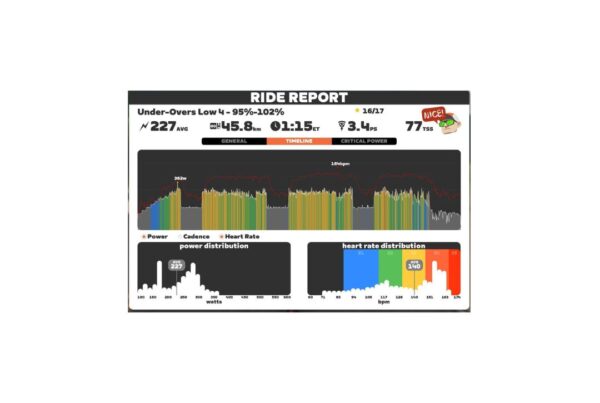“A bad workman blames his tools” – that is why I use Park Tool, so I only have myself to blame!
If you have a bike, it’s essential to have tools. But let’s be clear, it’s not about having any tools, it’s about having the right quality tools, for the right job, which is why I use Park Tool.
I am not going to assume that everyone has an in-depth knowledge of bikes and mechanics, I am certainly no expert. So to ‘plug that gap’ I reached out to the people who are experts in this field – Park Tool. I connected with Park Tool, to get some much needed advice and guidance on what vital tools you need in order to maintain your bike.
I was fortunate to speak with Alex Hawkins, Creative Director at Park Tool, who was able to recommend the essential tools that every indoor cyclist should own.
However, before reading about the tools, the history of Park Tool is fascinating. It has gone from a small-scale family run operation, to a global brand, which has maintained its connection to its roots.
The History of Park Tool
Park Tool as a company has its origins dating back to the 1960s. Howard C. Hawkins and Art Engstrom were the owners of a bicycle shop called Park Schwinn, in the Hazel Park area of Saint Paul, Minnesota, USA. They were faced with the challenge of not having the correct tools to fix the increasingly complex mechanisms that were being fitted to bikes, so they began building their own tools.
Their first invention, would you believe it, – was a bike stand! The stand held the bike off the ground allowing access to any part of it. The original prototype was constructed using legs from a dining room table, an empty shell casing and a truck axle from a ‘37 Ford.
Local bicycle shops, including the Schwinn Bicycle Company (a dominant manufacturer of American bicycles until 1992), liked the stands and requested a production model. It was then, ass Park Tool state themselves, “Park Tool Company was born!”
The range of tools expanded quickly and included wheel truing stands, wrenches or spanners as they can often be referred to and gauges.
As the business expanded so did their shops. Their first shop was actually called Hazel Park Cycle Center. Once they opened up a second location that was not in Hazel Park, they started calling their shops Park Cycle Center or Park Schwinn. In the early 1980s all three retail shops were sold to concentrate on the tool business, hence the name “Park Tool”.
Since their first hand tool was produced, Park Tool have built millions more and their line includes over 400 different items and has a global reach with a distribution network that spans the globe.
Art Engstrom retired from the business and Howard Hawkins passed away in 2015, however, the company remains a family business as it is owned and operated by Howard’s son, Eric.

Essential Tools for Indoor training
Alex told me that he talked with the various Park Tools Mechanics and came up with a list of key items to have in your tool box. Interestingly, one of these people he consulted was Calvin Jones, Park Tool Director of Education. Calvin features in many of Park Tool’s instructional videos and he even has his own blog, Calvin’s Corner. Calvin was the Bike Mechanic for the US Olympic team.
Tools to fix your bike to the trainer
If you are putting your bike on your indoor trainer, there are different sets of tools you will require, depending on the type of trainer you have.
Direct Drive – Chain Whip and Cassette Lockring
If you are thinking of getting a direct drive trainer, these are trainers which you remove your rear wheel and mount your bike directly to. Elite Directo XR-T or a Tacx Flux are such examples., For this you may need a Chain Whip and Cassette Lockring Tool to install the cassette onto the hub of the smart trainer. Note there are different sized Cassette Lockrings, depending on your cassette and you need to have the correct one. See the following video for advice: Which Park Tool FR-5.2 Lockring Tool Do I Need?


An instructional video can be found here on how to install the cassette to the hub:
Wheel on Turbo Trainers – Tire levers
If you are using a Wheel on Turbo, this is where you clamp your bike, via the quick release skewer of the rear wheel, into a frame. The frame positions the rear tyre so that it sits on a roller, and as you pedal and spin your rear wheel, this turns the roller.
The friction of the rear tire and roller can wear the tire, so it is advisable to replace the tire with one specifically designed for indoor training.
To change the tire, a tire lever set is required.

How to change a tire can be viewed here:
Gears
If you are setting up your bike on a direct drive trainer for the first time, or you are putting your outside bike on a direct drive trainer, it is highly likely you will have to undertake the painful task of indexing, or aligning your gears.
To undertake this task you will need a Screwdriver, and a Hex Wrench Set

Adjusting your gears is a challenge, but if you follow Calvin’s advice in these videos, you can’t go far wrong. These videos may help:
Bike Position
When setting up your bike on a turbo trainer, you may need to change the seat position and/ or handlebars. You want to be sure that you do not overtighten the bolts and potentially damage your frame or other components.
Furthermore, it is advisable to apply some Carbon and Alloy Assembly Compound which helps create a tighter grip between two slippery surfaces, such as using SuperGrip™ Carbon and Alloy Assembly Compound. Once you have applied the compound, use a torque wrench, so that the correct tension can be applied and you are not in danger of overtightening any bolts and potentially damaging anything. There are a variety of torque wrenches you can use such as the TW-6.2 Ratcheting Click-Type Torque Wrench . A full list of torque wrenches can be found here.
Pedals
If you are becoming more serious about your riding and racing on Zwift, you might be tempted to upgrade your pedals if you don’t use a clip-in system. Alternatively, you may be tempted to upgrade your current pedals and purchase some power meter pedals so that you can dual record your power in your rides and races. For the elite races, this is a pre-requisite and you will need to install new pedals. To undertake this you will need a Pedal Wrench.
If you are installing power meter pedals then you will need to ensure they are installed with the correct level of tension. For that you will need the new Beam-Type Torque Wrench — 0–60 Nm and Pedal Wrench Crow Foot.


This tool is back in production after a 20-year absence. The history is quite interesting. Roughly 20 years ago, the company that manufactured these on behalf of Park Tool, ceased trading and now, as a consequence of the increasing boom in the bike industry, this tool is now back in demand. Responding to this demand, Park Tool has begun production again.
Removing and installing pedals can be one of the most frustrating tasks. You can get confused on which way to turn the tool and I therefore recommend viewing this video to help:
Check chain and sprocket wear and tear
It is importance to maintain your drivetrain. It is vital that you check the wear of your chain, because as Park Tool states “A worn chain shifts poorly and wears sprockets at an accelerated rate.” To do this you will need a Chain Checker. This video explains how you can use a Chain Checker.
If you do need to replace your chain then a tool will be required to “crack the chain” and then you won’t go far wrong with the CT-5 Mini Chain Tool.

An instructional video can be viewed here: Changing your Chain
Get your hands dirty
I have highlighted useful tools and instructional videos that may aid you undertaking basic maintenance tasks. In addition, Park Tool have an archive of useful Repair Help articles to aid you in undertaking any repair task. Personally speaking, I think it’s important to have a basic understanding of bikes so that you can keep your ride in safe and good working order. Many of these tools I have described can be found in the Park Tool Home Mechanic Starter Kit.
In summary, invest in some good quality tools and try your hand at some basic mechanics that will keep you riding.



